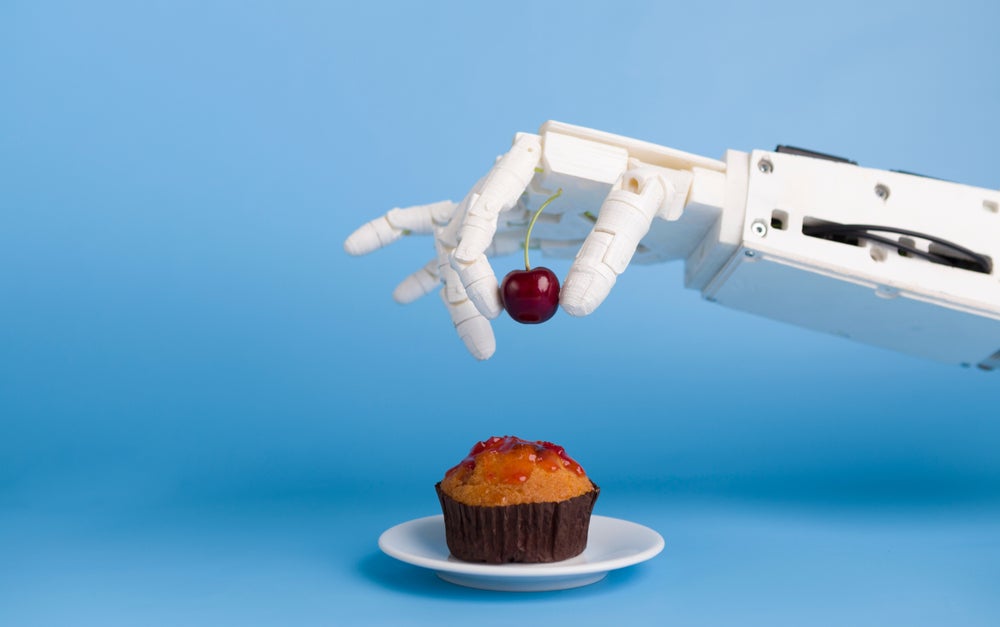Nestled away in the bustling kitchens of fast-food restaurants, robotics are making their mark.
As the pace of life gets faster and faster, robots are stepping up to the challenge of tirelessly delivering order after order with no compromise in quality, service, or efficiency.
The rapid integration of robotics into the fast-food sector has happened under the noses of many consumers who are unaware that a cold metal arm is flipping their burgers and dunking baskets of French fries in and out of vats of cooking oil.
The unstoppable rise of robots in fast-food
Automated machines are experiencing a period of transformation where they are permeating human spheres faster than ever before. No longer restricted to solitary heavy-lifting tasks in warehouses, robots are now working alongside humans in many areas of life. From care companions to surgical assistants, robots are being programmed to meet a variety of human needs. According to a recently published report by GlobalData, the global robotics market is predicted to grow at a compound annual growth rate of 17% between 2022 and 2030, by which time the market will be valued at $217bn.
As a testament to the growing buzz surrounding robotics, investment in automation has boomed. In early October 2023, Doosan Robotics made a triumphant debut on South Korea’s stock exchange when it ranked the country’s largest IPO this year having raised 421.2bn Won ($317 million). Doosan is making robots tailored to the service industry and in the days following the IPO, Doosan announced it had secured a partnership with Kyochon, one of South Korea’s largest fried chicken restaurant chains.
Other robot manufacturers are experiencing success in the fast-food sector. Miso Robotics, headquartered in California, announced in March 2023, that its collaborative automatons have been installed in over 100 restaurant locations.
How well do you really know your competitors?
Access the most comprehensive Company Profiles on the market, powered by GlobalData. Save hours of research. Gain competitive edge.

Thank you!
Your download email will arrive shortly
Not ready to buy yet? Download a free sample
We are confident about the unique quality of our Company Profiles. However, we want you to make the most beneficial decision for your business, so we offer a free sample that you can download by submitting the below form
By GlobalDataThe impact of robotics on the fast-food workforce
In the US, the fast-food sector is currently experiencing staffing shortages. According to the US National Restaurant Association, 62% of restaurants reported being understaffed while 92% described rising food costs to be a serious threat. The combination of both these factors renders a robotics workforce increasingly appealing. A similar motivation exists in countries such as Japan, South Korea, and Singapore, where populations are aging rapidly, and labour shortages pose an escalating threat to a variety of sectors.
In late 2022, McDonald’s opened its first almost fully automated restaurant in Texas. The futuristic store drew condemnation from many who criticized the fast-food colossus for threatening the livelihoods of its human workforce. Nevertheless, Chipotle, White Castle, and KFC, among others, have also adopted robots in select restaurants.
Embellished with cute names such as Flippy, a fast-food automaton produced by Miso Robotics, robots are disarming sceptical opponents. Equipped with precise algorithms, these machines handle orders of hundreds of famished restaurant patrons with ease. While staff fear for their job security, consumers welcome the robotic revolution if it means shorter wait times.
Reskilling is a necessity in the era of automation
The growth of robotics in the restaurant sector presents a new paradigm in the nature of employment. Despite the many benefits robots bring to the table, their usurpation of roles that millions of humans depend on for their livelihood is a genuine cause for concern.
Reskilling strategies are expected to become a high global priority going forward. As robotics spreads to both industrial and service sectors, one of the most important tasks for policymakers will be to harness the economic benefits of robotics while minimizing the negative social impacts.








